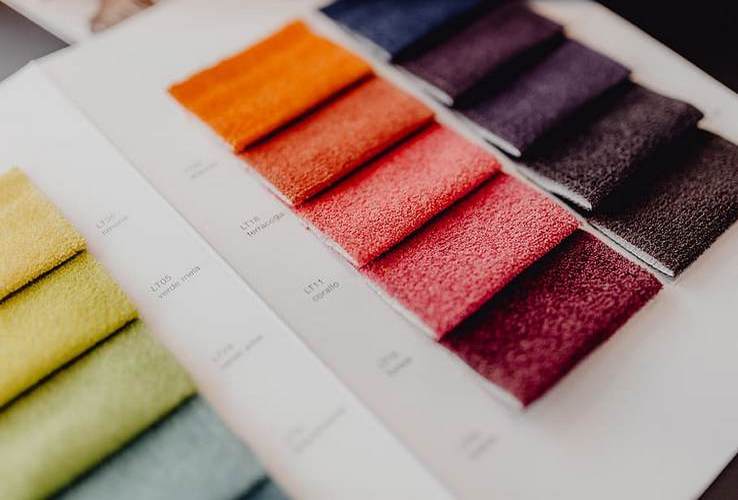An upgrade on fabric laminating, eco-friendly PUR adhesives bring advanced solutions
"Adhesives" are widely used in daily life and can adhere to various materials. The bonding strength between different materials will affect the performance of the composite material. The choice for suitable adhesive is based on surface characteristics on each substrate and this can result in ideal bonding strength; therefore, the choice of adhesive is significant. "Polyurethane" is often used as a raw material for synthetic adhesives. It has good physical and chemical properties, such as good abrasion resistance, high elongation, and easy processing. It can be used for adhesive processing on various materials. However, traditional polyurethane adhesives contain organic solvents which emit a large amount of volatile organic compounds (VOCs) during the production process and causing serious pollution to the environment. In pursuit of green and sustainable development, polyurethane adhesives are developing in a non-toxic, safe, and eco-friendly direction. Thus, how to balance material technology and environmental protection will undoubtedly become a hot topic in the future.
In response to eco-friendly needs, the materials used in industrial manufacturing are changing with each passing day, which also opens up the opportunity for adhesives to turn to environmental protection. Reactive polyurethane Hot-melt Adhesives (referred to as PUR) are new eco-friendly adhesives that emerged under this trend and have development potential in the adhesive market. It not only has the performance that solvent-based hot melt adhesives own, such as good initial adhesion and excellent curing performance after reacting with moisture, but also can withstand a larger temperature range. For substrates containing active hydrogen (such as fabrics, leather, paper, wood and plastics), they have good bonding performance and are widely used in textiles, automobiles, packaging, electronics, footwear, furniture and other industries.

(Image source: Piqsels)
In terms of adhesive development technology and market application trends, it is a general trend to reduce the impact of products on the environment. How to develop eco-friendly adhesives that meet the requirements as well as being economical will be a challenge for the adhesive industry. Compare the advantages of the two eco-friendly adhesives: Water-based Polyurethane adhesives have attracted attention because the process conditions and adhesive properties are same as solvent-based PU adhesives, but there are problems such as processing and high prices. PUR is widely used in the textile processing industry because of its excellent adhesion and physical properties and mainly used for fabric lamination (fabric and fabric lamination, film and fabric lamination) to meet various functional requirements of textiles. Furthermore, it does not use solvents, has no drying procedures, can operate in fast speeds, and save on usage volume of adhesives in processing process. The comparison between eco-friendly adhesives and solvent-based adhesives is as follows:
| Item | Eco-friendly adhesive | Sovent-based adhesive | ||
| PUR hot-melt adhesive | Water-based PU adhesive | PU adhesive | ||
| Resin Characteristics | Solid Content | 100% | Not 100% | Not 100% |
| Environmental protection | No VOCs | No VOCs | VOCs | |
| Viscosity Adjustment |
Adjust viscosity by temperature | Adjust viscosity with thickener | Adjust viscosity with solvent |
|
| Film properties | Heat resistance |
Good | Poor | Good |
| Hydrolysis resistance |
Good | Poor | Good | |
| Processing | Method | Dot coating, roller coating, spray coating | Blade coating, roller coating |
Blade coating, roller coating |
| Amount | Less | More | More | |
| Process | No drying procedures | Need drying procedures, Heat curing | Need drying procedures, Heat curing | |
| Productivity | High | Low | Low | |
Advances in technology and changes in lifestyles have made consumers have more and more functional requirements for clothing. In addition to the popularity and texture requirements of appearance, they must also meet the comfort and functionality required by various outdoor activities, such as windproof, waterproof, breathable and other functions, which relies on the combination of new materials and technology to give the fabric various properties. PUR can be laminated with various fabrics (water repellent fabric, polyester fabric, nylon fabric, etc.) and functional films (TPU film, PU film, etc.), so that textiles can be combined with functional materials, and at the same time bring in fashionable aesthetic design to enhance the added value of products, especially the rise of sports and leisure activities in recent years, functional clothing is no longer limited to professional sports wear, but has become a part of leisure life, and has gradually become another business opportunity in the textile market.

(Image source: Piqsels)
The current trend of textile development is "functional" and "environmental protection". For outdoor casual sportswear, through the bonding of fabrics and functional films, the "waterproof" and "breathable" functions are combined into a fabric, which allows the steam released during exercise to be emitted to the outside to achieve a cooling effect. In order to maintain excellent comfort and dryness, the surface of fabric can also resist moisture penetration. The key to the textile lamination process lies in the film and adhesive. The film with good breathability must be matched with high-quality adhesives to create fabrics with excellent durability, waterproof and breathability. Fabrics laminated with PUR not only have a soft hand feel, but also can withstand the test of breathability, water pressure resistance and washing resistance, and also have better bonding strength, peel strength and weather resistance.
At present, the commonly used fabric laminating technology of PUR is divided into the followings:
-
Dot coating process: Coated to substrates by engraving wheel roller , the hot melt adhesive is picked up by the engraved wheel roller and transferred to the substrate for bonding. The amount of adhesive transferred to the substrates depends on the roller type, such as rhombus type, regular type, random type and fish scale type, etc., suitable for soft hand feel and breathable textile lamination.
-
Spray coating process: Coated to substrate by melt spraying , the hot melt adhesive is output to the nozzle through the melter, and the adhesive is sprayed on substrate for bonding. The amount of adhesive applied is controlled by sprayed glue and operating speed. Therefore, it is necessary to consider the viscosity suitability of melt-blown temperature to select the adhesive. And also, it is suitable for soft fabric or three-layer bonding with resin bond non-woven and PU film laminated in the middle of the soft fabric.
- Full coating process: Coated to substrate by mesh roller , the hot-melt adhesive is picked up by mesh roller and transferred to the substrate for bonding. The gap between roller and roller is used to adjust and control the amount of coating adhesive. It is suitable for finished products with high adhesion requirements, such as inflatable materials and elastic fabrics.
| Coating Method | Roller Type | Laminating Fabrics | ||
| Property | Material | Application | ||
| Dot Coating | .JPG) |
Soft hand feel, breathable textile lamination. |
knitted fabric//woven fabric fabric//film fabric//film//fabric fabric//foaming material |
Multiple layers fabrics Waterproof and breathable fabrics |
| Spray Coating | .JPG) |
Soft hand feel, coated with less adhesive |
fabric//foaming material | Underwear |
| Full Coating |
.JPG) |
high adhesion requirements | mesh fabric//fabric mesh fabric//mesh fabric |
Mesh shoes/apparel Inflatable fabrics/luggage Elastic fabrics Velcro |
The most common laminating structure in the textile industry is fabric//film, fabric // fabric. The factors that need to be considered for processing conditions include the type of fabrics (such as knitted or woven fabric ), water repellency, whether it has been calendering or striking out , fiber material, film material (PU, TPU, PVC, EVA, PE, etc.), film thickness, whether the film is corona treated , the melting point of the film, the use and requirements of final product, etc. For waterproof and breathable textiles, it emphasizes the performance of breathability, soft hand feel, water pressure resistance, and washing resistance, a hydrophilic adhesive must be used when laminating fabrics to maintain breathability.
CPMC launched a series of solvent-free products for fabric lamination, providing total solutions for various fabrics and functional films, including general type, waterproof and breathable type, suitable for fabric and fabric lamination, fabric and film lamination, and fastening tape lamination, etc. It can be widely used in all kinds of garment fabrics, light bags, luggage, medical supplies, household goods, industrial fabrics, etc. The full range of products can replace commercially available solvent-based products, making textile laminating technology to move toward environmentally friendly, and building a sustainable competitive advantage. The product introduction of solvent-free adhesive for fabric lamination is as follows. For more product information, please【contact us】。
| Product | PR-6568H | PR-6226 | PR-6593 |
| Type | Waterproof and breathable type | Stretch and elastic fabrics type (Jacquard/mesh fabrics) |
General type |
| Solvent-free adhesive | PUR 100% solid content |
PUR 100% solid content |
PUR 100% solid content |
| Application | Fabric//film | Fabric//fabric Fabric//film |
Fabric//film |
| Feature | ◆ Very soft touching after curing, high strength adhesion ◆ High level breathability, the breathability of the original functional film can be retained above 80% after lamination |
◆ Very soft touching after curing, high strength adhesion, has long operation time, high initial adhesion |
◆ Very soft touching after curing, high strength adhesion, has long operation time, low temperature operation, fast curing speed, good washing resistance |

